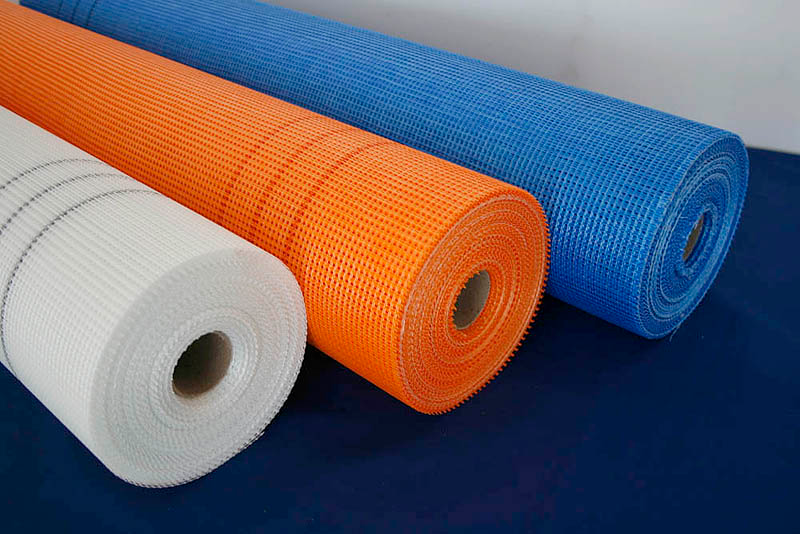Introduction
Luxury Vinyl Tile (LVT) flooring has become a popular choice for residential and commercial spaces due to its durability, water resistance, and aesthetic versatility. A key innovation in LVT manufacturing is the integration of fiberglass mesh reinforcement, which enhances stability, dimensional strength, and long-term performance.

This article explores:
- The role of fiberglass mesh in LVT flooring
- Key benefits of this composite structure
- How it compares to traditional flooring materials
- Installation and maintenance considerations
1. What is Fiberglass Mesh-Reinforced LVT?
LVT flooring consists of multiple layers, typically including:
- Wear Layer – A protective topcoat for scratch and stain resistance.
- Decorative Layer – A high-resolution printed design (wood, stone, or abstract patterns).
- Core Layer – Usually made of PVC or stone-plastic composite (SPC).
- Backing Layer – Provides stability and underfoot comfort.
In fiberglass mesh-reinforced LVT, a woven or non-woven fiberglass mesh is embedded within the core layer. This mesh acts as a dimensional stabilizer, preventing warping, expansion, and contraction due to temperature and humidity changes.
How Fiberglass Mesh Works in LVT
- Tensile Strength – The mesh provides structural reinforcement, reducing the risk of cracks or splits.
- Moisture Resistance – Unlike organic materials (e.g., wood), fiberglass does not absorb water, making the flooring more stable in humid environments.
- Flexibility & Impact Resistance – The mesh allows slight flexibility, preventing brittleness while maintaining rigidity.
2. Key Advantages Over Traditional Flooring
| Feature | Fiberglass-Reinforced LVT | Traditional Hardwood | Laminate Flooring |
|---|---|---|---|
| Water Resistance | Excellent (fully waterproof) | Poor (warps with moisture) | Moderate (swells if water seeps in) |
| Dimensional Stability | High (resists expansion/contraction) | Low (affected by humidity) | Medium (prone to buckling) |
| Durability | Highly scratch- and impact-resistant | Susceptible to dents/scratches | Moderate wear resistance |
| Installation | Easy (floating, glue-down, or loose-lay) | Complex (nailing/gluing required) | Moderate (click-lock system) |
| Maintenance | Low (easy to clean, no refinishing needed) | High (requires polishing/sealing) | Medium (sensitive to excess water) |
3. Applications of Fiberglass Mesh LVT
Due to its durability and moisture resistance, fiberglass-reinforced LVT is ideal for:
- High-Traffic Areas (offices, retail stores, hospitals)
- Moisture-Prone Spaces (bathrooms, kitchens, basements)
- Commercial & Residential Use (hotels, schools, apartments)
Case Study: LVT in Healthcare Facilities
Hospitals require hygienic, slip-resistant, and durable flooring. Fiberglass-reinforced LVT meets these needs because:
- It resists bacteria growth (non-porous surface).
- It withstands frequent cleaning with disinfectants.
- The mesh prevents warping from spills or steam cleaning.
4. Installation & Maintenance Tips
Installation Methods
- Floating Floor – Uses a click-lock system; no glue required.
- Glue-Down – Provides extra stability for high-traffic areas.
- Loose-Lay – Heavy-duty versions stay in place without adhesive.
Maintenance Best Practices
✔ Daily Cleaning – Sweep or vacuum; mop with pH-neutral cleaner.
✔ Avoid Harsh Chemicals – Bleach or ammonia can damage the wear layer.
✔ Protect from Heavy Furniture – Use felt pads under chair legs.
5. Future Trends in Reinforced LVT Flooring
- Eco-Friendly Options – Recycled fiberglass and bio-based PVC are emerging.
- Enhanced Digital Printing – More realistic wood/stone textures.
- Hybrid Flooring – Combining LVT with cork or acoustic underlayments for noise reduction.
Conclusion
Fiberglass mesh-reinforced LVT flooring offers superior durability, moisture resistance, and ease of installation compared to traditional materials. Its structural stability makes it a top choice for modern interiors, from homes to commercial spaces.
As technology advances, we can expect even more innovative applications of fiberglass in flooring, ensuring long-lasting performance and sustainability.
Would you like a deeper dive into any specific aspect of fiberglass-reinforced LVT? Let us know in the comments!
